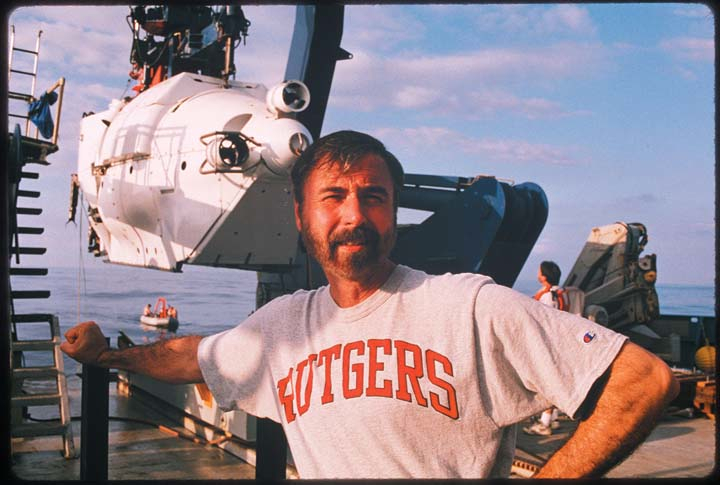Rutgers Marine Scientist Brings Images of Ocean’s Depths to the Public
Richard Lutz recognized by Academy of Underwater Arts and Sciences for his contributions

Rutgers marine scientist Rich Lutz will go to deep depths for public access to science. He has spent hundreds of hours since his first dive in 1979 in a variety of submersibles exploring hydrothermal vents throughout the world’s oceans.
The professor of marine and coastal sciences believes that a picture is worth a thousand words and thinks that the best way to share his research is with photographic images taken by some of the most eminent underwater photographers in the world.
Last week, The Academy of Underwater Arts and Sciences agreed. In recognition of his lifelong contributions to ocean sciences, and for making those sciences accessible to the public, Lutz joined such luminaries as filmmaker James Cameron and the late oceanographer Jacques Cousteau and received the academy’s highest award – the NOGI.
“Some of the scientists told me, ‘Well, I can go down there and take pictures just as well as these guys can,” Lutz recalls. “Well … no. You can’t. Some of those scientists never forgave me, but if I had it to do again, I’d do it in a heartbeat.”
That was more than 20 years ago, in 1993, after Lutz received funding from the National Science Foundation and brought underwater photographers Al Giddings and Emory Kristof on the expedition to visually capture the communities of animals living around hydrothermal vents, two years after a violent deep-sea volcanic eruption.
Lutz wanted to see how the 1991 volcanic eruption affected the marine ecosystem and wanted a marine scientist and a photographer to go down on each dive. This was unpopular with some of his colleagues who thought that only scientists should dive in the submersible.
“Rich maintained that if you wanted really to show this accurately, you needed a couple of photographers – Al Giddings and myself – to make a completely accurate visual record,” said Kristof, whose credits for National Geographic include a stunning series of pictures of the wreck of RMS Titanic in 1998. “Some of the other scientists thought those seats should go to scientists, who would go down, take careful notes and make drawings.”
The images produced on that 1993 expedition – still photography by Kristof, moving images by Giddings – eventually found their way into documentaries by PBS, the Japanese broadcaster NHK, and BBC (in the award-winning documentary Blue Planet). They attracted the attention of documentarian Stephen Low, who went on to use them in Volcanoes of the Deep Sea, the 2005 IMAX film on which Lutz and the late Peter Rona were science directors and of which Rutgers University was a co-producer.
Lutz has spent many hours and miles deep in the ocean and is still excited to go down every time, despite times when he thought he might not get back to the surface. Once, he remembers going 7,000 feet down with pilot Cindy Lee van Dover and pilot-in-training Randy Hinderer and the submersible Alvin getting stuck for thirteen-and-a-half hours in 600 pounds of mud.
“Longest thirteen-and-a-half hours of my life,” Lutz said. “All of a sudden, all the science I was excited about didn’t seem important.”
Media contact: Ken Branson, 848-932-0580; cell 908-797-2590; kbranson@ucm.rutgers.edu